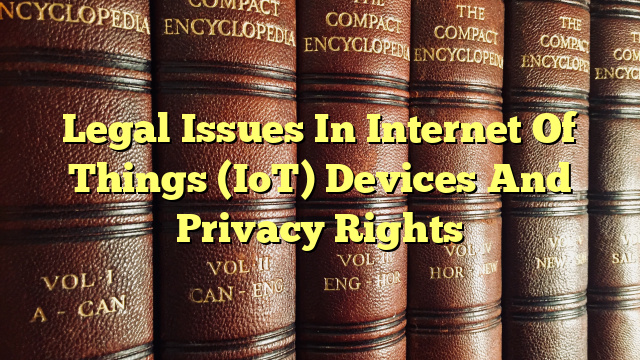Table of Contents
- Introduction
- Privacy and Security Issues with IoT Devices
- Internet of Things Security and Privacy Policy
- Conclusion
Introduction
The Internet of Things (IoT) is a network of everyday objects that are connected to the internet and communicate with each other. IoT devices are used to monitor, control, and automate various tasks. The use of IoT devices is increasing as people find more and more ways to use them in their daily lives. As the use of these devices increases, so do the legal issues surrounding them. With the use of IoT devices, people are faced with questions about privacy, security, data ownership, and liability.
Privacy and Security Issues with IoT Devices
The biggest concern with IoT devices is privacy. IoT devices collect data about people’s habits, movements, and even their personal information. This data is then stored, analyzed, and potentially shared with third parties. Without proper security measures, this data can be vulnerable to hacking and misuse. Additionally, many IoT devices lack transparency about how and when this data is collected and who has access to it.
Data ownership is another legal issue associated with IoT devices. Many companies that produce and use IoT devices do not have clear policies or guidelines about who owns the data collected by these devices. This can lead to confusion and disputes about who has the right to use, access, and control the data.
Finally, IoT devices can be vulnerable to security threats. Many devices lack adequate security measures or have security flaws that can be exploited by hackers. As more and more devices become connected to the internet, they become more vulnerable to security threats. This can lead to data theft, unauthorized access to devices, and even denial of service attacks.
Internet of Things Security and Privacy Policy
It is essential that companies that produce and use IoT devices create comprehensive security and privacy policies that protect users’ data. These policies should include measures to protect data from being accessed or used without permission, as well as measures to protect the privacy of users. A company’s security and privacy policy should also be transparent, meaning that users should be aware of what data is collected and how it is used. Finally, a company’s security and privacy policy should be flexible, meaning that it should be able to adapt to changes in technology and the legal landscape.
Conclusion
As IoT technology continues to grow, so do the legal issues surrounding it. Privacy rights are a major concern with IoT devices, as well as security issues, data ownership, and liability. It is essential that companies that produce and use IoT devices create comprehensive security and privacy policies that protect users’ data. Additionally, users should be aware of what data is being collected and how it is being used. By taking steps to ensure the security and privacy of IoT devices, companies can protect users and ensure that the use of these devices is legal and ethical.
What are the privacy and security issues in IoT?
The biggest concern with IoT devices is privacy. IoT devices collect data about people’s habits, movements, and even their personal information. This data is then stored, analyzed, and potentially shared with third parties. Additionally, many IoT devices lack transparency about how and when this data is collected and who has access to it. Finally, IoT devices can be vulnerable to security threats such as data theft, unauthorized access to devices, and denial of service attacks.
What are the 3 main issues with IoT enabled devices?
The three main issues with IoT enabled devices are privacy, data ownership, and security. Privacy is a major concern, as

